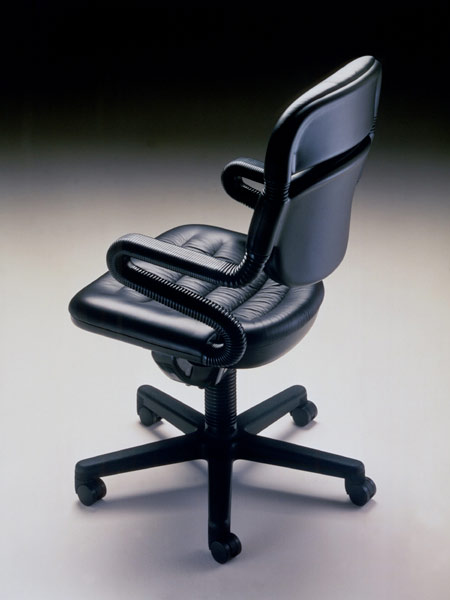We generally do not notice when something is designed properly since it functions as it is supposed to, but we do notice bad design. This is where ergonomics comes in.
Ergonomics is the study of the human body and how it interacts with its surrounding environment, be it through making use of a product or a system. Even more so today with the advances in technology, it would be quite risky for the company's credibility to produce something which does not compliment the physical needs of the consumer.
Ergonomics has two major objectives: to enhance the effectiveness and efficiency with which work and other activities are carried out, as well as to improve safety, reduce stress and increase comfort. Ergonomically-designed products have to be given the utmost importance especially in the work place as this will increase the workers' productivity, increase efficiency and in general, make the work environment a comfortable place to work in.
 |
| Vertebra armchair - Emilio Ambasz It is said to be the first automatically adjustable office chair, designed to respond and adapt to the movements of the user's body and provide comfort and support |
Another aspect which goes hand in hand with ergonomic design is universal or inclusive design.
Universal design refers to the importance of products which cater for the needs of everyone. This aim behind this type of design is to integrate everyone irrespective of physical ability, age, mental capacity, or any other situation.
Universal design aims to accommodate people with special needs, children, the elderly, and others who find themselves outside the parameters of what is normally considered acceptable or average.
Universal Design focuses mainly on creating designs that are functional and usable by everyone, giving importance to accommodating the different needs and abilities of each individual. In order to do this, products designed for a specific purpose must simple to use, easy to understand and able to communicate information easily and effectively. This will lead to the minimization of accidents, while still being ergonomic so as to reduced the amount of physical effort required to perform tasks.
It is of utmost importance for designers and design companies to incorporate ergonomic and universal design in their design process. it is a responsibility which needs to be taken seriously as it could effect the customers', hopefully in a positive way so as to make life safer and better for everyone, irrespective of the physical situations they may be in.
References
Inclusivedesigntoolkit.com, (2015). What is inclusive design?. [online] Available at: http://www.inclusivedesigntoolkit.com/betterdesign2/whatis/whatis.html#p110 [Accessed 28 Jan. 2015].
Metmuseum.org, (2015). Emilio Ambasz and Giancarlo Piretti: "Vertebra" armchair (1989.48) | Heilbrunn Timeline of Art History | The Metropolitan Museum of Art. [online] Available at: http://www.metmuseum.org/toah/works-of-art/1989.48 [Accessed 28 Jan. 2015].
nibusinessinfo.co.uk, (2015). [online] Available at: https://www.nibusinessinfo.co.uk/content/importance-ergonomics [Accessed 28 Jan. 2015].
